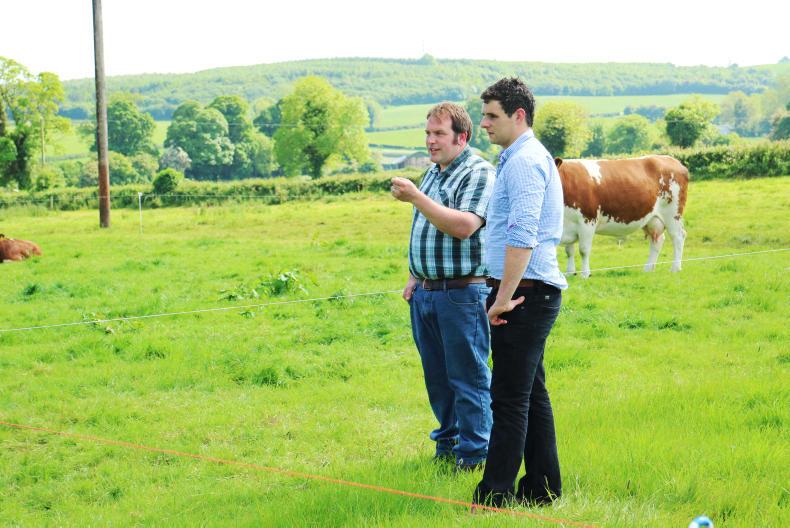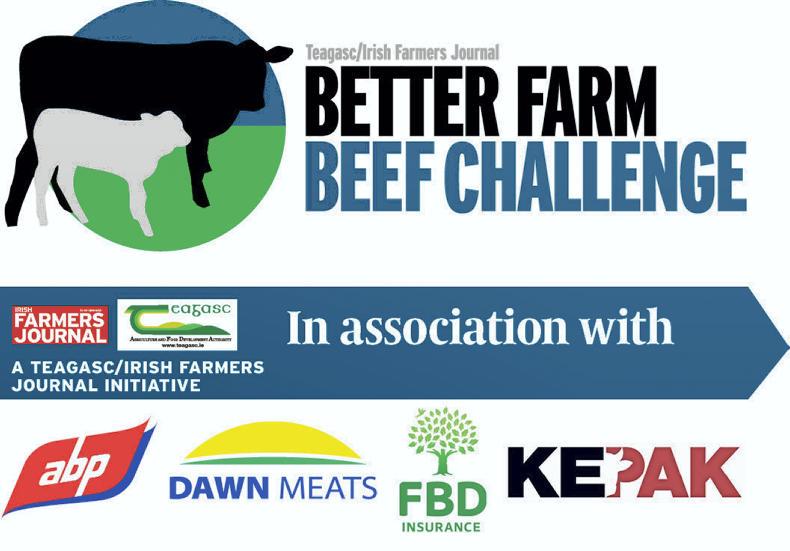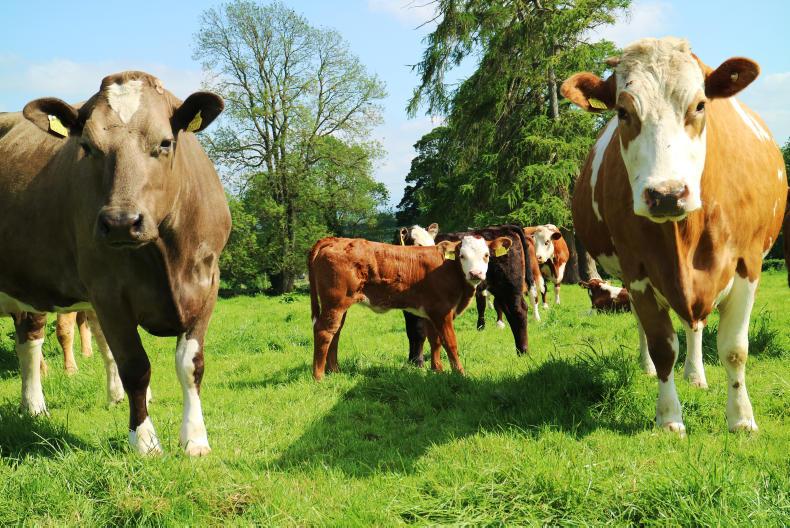Selling lots of live weight, or beef, at as high a price as possible is vital for profitable farming.
When the BETTER advisory team sits down to plan for the future with new BETTER farmers, they estimate the level of output that the farm could achieve by the end of the programme. Then, based on a probable efficiency ratio, ballpark gross and net margin targets are put in place.
You too at home can carry out such an exercise quite easily. Start by asking yourself the following questions about your farm:
1. How many hectares on the farm? e.g. 25
2. What are target suckler cow numbers? e.g. 50
3. What is target mortality? e.g. 5%
4. What is preferred system? e.g. spring-calving, selling weanlings
5. What is replacement policy? e.g. breeding own
6. What are estimated sale weights? e.g. 320kg heifers, 360kg bulls
7. What is estimated price per kg? e.g. €2.70/kg
8. What is cull cow value? €1,200
Example: so, at a rate of 5% mortality there are 47 calves to sell. Assume the farm has 23 bulls and 24 heifers. Take 10 heifers as replacements – that leaves 37 animals to sell (23b and 14h). At the projected weights we have €22,356 (360kg x €2.70 x 23) coming from bulls and €12,096 (320kg x €2.70 x 14) from heifers. Add €12,000 for culls at a replacement rate of 10%.
Total farm gross output is €46,452.
Variable cost ratio
Next make a variable cost ratio estimation. Variable costs are things like feed, fertiliser, vet, and contractor bills.
A number of factors feed into this. Aim to keep 50% of output as a gross margin.
In a bull finishing system this will be closer to 40%, given the big feed bill but these typically generate huge output so margins will remain high. On the other hand, a forage-based steer beef system with long grazing seasons could be closer to keeping 60% of their gross output given the lower feed bills. However, output is generally lower on these farms relative to bull systems.
Efficiency
Trimming the output/cost ratio is all about efficiency. Lots of grass in the diet (long grazing season), high stocking rates (>2LU/ha) good quality silage (>70% DMD), good herd health, tight calving (eight-10 weeks), good progeny performance – all of these will help keep it low. Essentially, we need to get as much bang for our buck as possible.

If our theoretical weanling farmer was running a relatively high stocking rate of around 2.5LU/ha and able to achieve a 50% output/cost ratio, his or her gross margin per hectare would be €929/ha (€46,452 x 50% ÷ 25ha) – high performance from a weanling producing farm.
What could your farm achieve?
The target for the BETTER farm group is to average a lofty €1,200/ha gross margin. Stocking rates will need to be pushed hard, efficiency maximised and bought-in cattle will help boost output in a lot of cases. However, these will only come in if they make financial sense. When factoring these in, be sure to subtract purchased price from the output figure.

Read more
BETTER farm
Selling lots of live weight, or beef, at as high a price as possible is vital for profitable farming.
When the BETTER advisory team sits down to plan for the future with new BETTER farmers, they estimate the level of output that the farm could achieve by the end of the programme. Then, based on a probable efficiency ratio, ballpark gross and net margin targets are put in place.
You too at home can carry out such an exercise quite easily. Start by asking yourself the following questions about your farm:
1. How many hectares on the farm? e.g. 25
2. What are target suckler cow numbers? e.g. 50
3. What is target mortality? e.g. 5%
4. What is preferred system? e.g. spring-calving, selling weanlings
5. What is replacement policy? e.g. breeding own
6. What are estimated sale weights? e.g. 320kg heifers, 360kg bulls
7. What is estimated price per kg? e.g. €2.70/kg
8. What is cull cow value? €1,200
Example: so, at a rate of 5% mortality there are 47 calves to sell. Assume the farm has 23 bulls and 24 heifers. Take 10 heifers as replacements – that leaves 37 animals to sell (23b and 14h). At the projected weights we have €22,356 (360kg x €2.70 x 23) coming from bulls and €12,096 (320kg x €2.70 x 14) from heifers. Add €12,000 for culls at a replacement rate of 10%.
Total farm gross output is €46,452.
Variable cost ratio
Next make a variable cost ratio estimation. Variable costs are things like feed, fertiliser, vet, and contractor bills.
A number of factors feed into this. Aim to keep 50% of output as a gross margin.
In a bull finishing system this will be closer to 40%, given the big feed bill but these typically generate huge output so margins will remain high. On the other hand, a forage-based steer beef system with long grazing seasons could be closer to keeping 60% of their gross output given the lower feed bills. However, output is generally lower on these farms relative to bull systems.
Efficiency
Trimming the output/cost ratio is all about efficiency. Lots of grass in the diet (long grazing season), high stocking rates (>2LU/ha) good quality silage (>70% DMD), good herd health, tight calving (eight-10 weeks), good progeny performance – all of these will help keep it low. Essentially, we need to get as much bang for our buck as possible.

If our theoretical weanling farmer was running a relatively high stocking rate of around 2.5LU/ha and able to achieve a 50% output/cost ratio, his or her gross margin per hectare would be €929/ha (€46,452 x 50% ÷ 25ha) – high performance from a weanling producing farm.
What could your farm achieve?
The target for the BETTER farm group is to average a lofty €1,200/ha gross margin. Stocking rates will need to be pushed hard, efficiency maximised and bought-in cattle will help boost output in a lot of cases. However, these will only come in if they make financial sense. When factoring these in, be sure to subtract purchased price from the output figure.

Read more
BETTER farm








 This is a subscriber-only article
This is a subscriber-only article











SHARING OPTIONS: